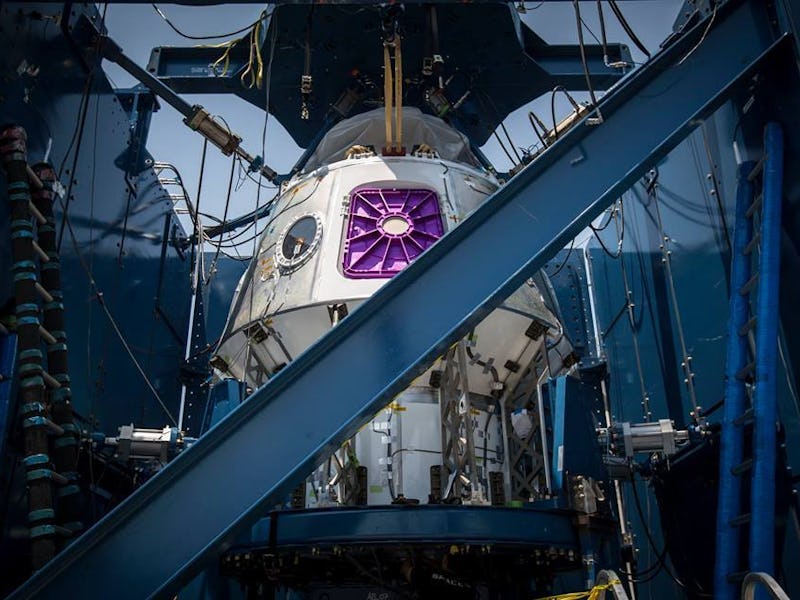SpaceX Shares Photos of Crew Dragon, the Capsule That Will Carry Astronauts
The mission is to take place some time in 2017.

When NASA’s final shuttle mission ended in July 2011, it was unclear if private companies would be able to pick up the slack. SpaceX has proven it can support NASA’s cargo missions (most of the time anyway), but ensuring the safety of astronauts is more complex.
In 2017, SpaceX hopes to prove itself and release NASA from its reliance on the Russian Space program with its first-ever crewed flight to the International Space Station aboard the company’s Crew Dragon vessel, which is a passenger-carrying version of the upgraded Dragon 2 spacecraft.
This week, Elon Musk’s company shared photos of the crew capsule undergoing testing, giving us the latest glimpse at how humans will travel to space in the coming years.
The photo shows the first of two “test articles” undergoing structural load tests, which are designed to mimic the forces and pressures felt during launch and reentry.
“When we transport astronauts on Crew Dragon to the International Space Station next year, it will be within one of these pressure vessels that over the coming months will turn into a fully functional spacecraft,” SpaceX explained.
A SpaceX pressure vessel undergoes a stress test.
SpaceX says it has also just completed construction of metallic-welded pressure vessels, which it says will be used for ground tests.
“The pressure vessel is the primary structure of the spacecraft that protects astronauts during ascent, while in outer space, and during entry and landing to provide a safe and controlled environment in which to travel and work,” the Facebook post reads.
SpaceX has a lofty goal: Elon Musk has never successfully launched a product on time because he purposely sets deadlines that are nearly impossible to meet and lets everyone thrive under that pressure.
SpaceX President Gwynne Shotwell said back in January 2015 that the company will fly more than 50 Falcon 9 missions, including a demo mission without a crew and an in-flight ejection test, prior to putting a crew on the vehicle.
More than a year later SpaceX still as a long way to go to meet those numbers, but the company is persistent, writing, “In 2017, Crew Dragon, the crew-carrying version of the upgraded Dragon 2 spacecraft, will restore the United States’ capability to fly humans to orbit.”